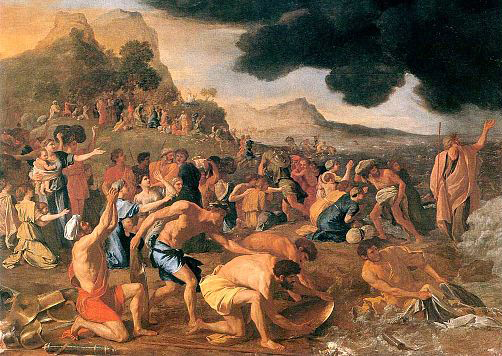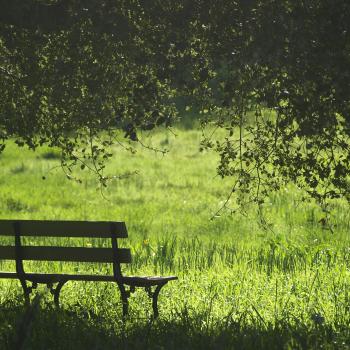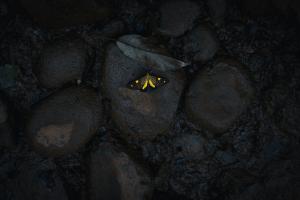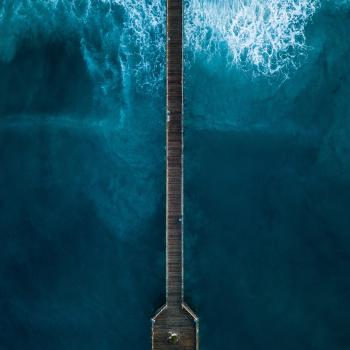 What a miracle! They had been freed, the Israelites, from Egypt, but moments after they set out on their way “home,” Pharaoh changed his mind, whipped his chariots and troops into a fury of pursuit and were fast closing in on the Israelites trapped by an impassable body of water before them.
What a miracle! They had been freed, the Israelites, from Egypt, but moments after they set out on their way “home,” Pharaoh changed his mind, whipped his chariots and troops into a fury of pursuit and were fast closing in on the Israelites trapped by an impassable body of water before them.
And then…and then…and then, safe on the far shore, their enemies drowned when the walls of water collapsed over them. They sang, they beat on frame drums, they danced: a victory song and dance, the song of the sea!
They might have just uttered an emotive “wow!” or a slightly lengthier, livelier “holy shit!” One or two words at a moment, just after a peak experience, when words wouldn’t suffice to express what they experienced, witnessed, felt, knew.
Instead, in typically Jewish fashion, they gave us eighteen verses, a couple of hundred words, among them these: Who is like You, O Lord, among the gods?
Form, in poetry, is something many novice readers cannot feel and may not even notice. That’s why, in my undergraduate course in reading poetry, I assign Wallace Stevens’s “The Idea of Order at Key West” and A. R. Ammons’s “Corsons Inlet” on the same week: these two poems can offer students an experience of the expressive power of form.
In “The Idea of Order at Key West,” an observer walking near the sea hears a woman singing. Her song, her voice gets the speaker thinking about the source of the song, the relation between the sound of the song and the sound of the sea, and the song’s enchanting impact on her possibly unintended audience. These questions have to do with the relationship between art and nature, creator and creation, singer and listener, poem and reader.
The speaker in “Corsons Inlet” describes and reflects on a walk around the inlet in the morning of the day on which the poem, according to its opening line, was written: “I went for a walk over the dunes again this morning.”
As the poem unfolds, its descriptions, observations and reflections move back and forth between what the walker observes outside of himself—in nature—and what he observes as he translates sense perception into language, thought. He pays close attention to “narrow orders” within nature and his own mind and “enlarging grasps of disorder, widening / scope.”
Rather than feel frustrated at his inability to arrive at a “finality of vision”—the order of all of nature’s manifold events—he celebrates the “freedom” of knowing that “Scope eludes my grasp, there is no finality of vision, / that I have perceived nothing completely, / that tomorrow a new walk is a new walk.”
When asked, the students can describe the shape of each poem on the page: Stevens’s poem in tidy stanzas and lines that appear to be of the same length: even the right hand margin appears justified. Ammons’s poem wanders all over the page—long lines, short lines, stanzas of irregular length and shape.
Eventually, I direct the students’ attention to the penultimate stanza of “The Idea of Order at Key West”:
Ramon Fernandez, tell me, if you know,
Why, when the singing ended and we turned
Toward the town, tell why the glassy lights,
The lights in the fishing boats at anchor there,
As the night descended, tilting in the air,
Mastered the night and portioned out the sea,
Fixing emblazoned zones and fiery poles,
Arranging, deepening, enchanting night.
So, what’s happening here? The song has ended, the speaker and his companion are turning away from the sea and toward the town, and what do they experience next? Lights mastering the night, portioning out the sea, “fixing emblazoned zones and fiery poles, / Arranging, deepening, enchanting night.”
Is the poem written in any metrical form? Ah, one student finally hears it (or does she see it?): blank verse. And the relationship between blank verse and the experience represented, enacted in the poem? Ah, art (in this case meter) imposes order on nature. Its effect on the audience? They perceive the marina, for a moment, for the moment before the effect of the song on them fades, as orderly and thereby enchanted.
And what about the Ammons?
no arranged terror: no forcing of image, plan,
or thought:
no propaganda, no humbling of reality to precept:
Ah, art, the apparent formlessness of “Corsons Inlet” is an attempt to create forms that are analogous to the many orders, the many forms of nature.
Wow! I don’t know if that expresses what the students feel when they see this, when they get it, the power of form. Maybe to a lesser degree than I experience it every time I read and discuss these two poems in class.
Comparison: it can clarify, illuminate distinctions between one poem and another, or, say, one car and another when shopping for cars, or one potential life partner and another when shopping for partners for life.
Comparing: it’s often accompanied by assessing and ranking, this restaurant is better than that; these people—people who look like this, dress like this, think like this, behave like this—are dangerous, undesirable, just plain bad; while these people, they are like us, smart, honest, ambitious, disciplined—these people are good.
Then there’s this comparison: my god is better than yours. It’s right there, Exodus 15:11, the inclination, the habit to compare: Who is like you, O Lord, among the other gods? Right there in the immediate aftermath of a peak experience, an experience of what they, the Israelites, call god.
Comparing this to that: it can be helpful, and it can be harmful. Our responsibility is to see it as it arises—the comparing mind—and, at the very least, be aware of the possibility that the truth illuminated by the act of comparing may obscure or hide an equally valid, equally true truth.
Richard Chess is the author of three books of poetry, Tekiah, Chair in the Desert, and Third Temple. Poems of his have appeared in Telling and Remembering: A Century of American Jewish Poetry, Bearing the Mystery: Twenty Years of IMAGE, and Best Spiritual Writing 2005. He is the Roy Carroll Professor of Honors Arts and Sciences at the University of North Carolina at Asheville. He is also the director of UNC Asheville’s Center for Jewish Studies.
The painting above, The Crossing of the Red Sea, is by Nicolas Poussin (public domain), accessed through Wikimedia Commons.











